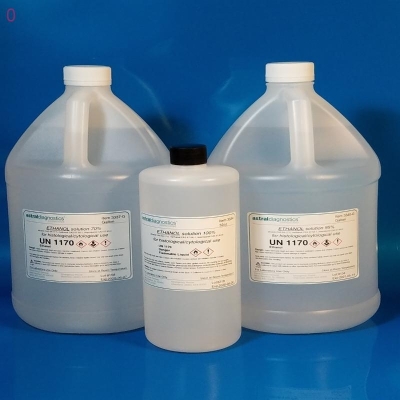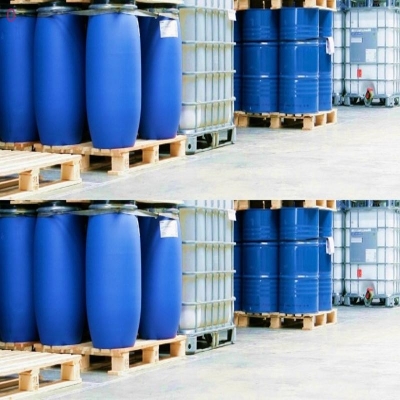-
Categories
-
Pharmaceutical Intermediates
-
Active Pharmaceutical Ingredients
-
Food Additives
- Industrial Coatings
- Agrochemicals
- Dyes and Pigments
- Surfactant
- Flavors and Fragrances
- Chemical Reagents
- Catalyst and Auxiliary
- Natural Products
- Inorganic Chemistry
-
Organic Chemistry
-
Biochemical Engineering
- Analytical Chemistry
- Cosmetic Ingredient
-
Pharmaceutical Intermediates
Promotion
ECHEMI Mall
Wholesale
Weekly Price
Exhibition
News
-
Trade Service
[ Focus on Chemical Machinery and Equipment Network ] As one of the commonly used materials in daily life, plastic not only brings convenience to people, but also causes damage to the environment.
Plastic waste pollution known as "white pollution" has become an arduous challenge facing the global environment.
In order to control white pollution, my country has been vigorously implementing the "plastic limit order and encouraging the use of degradable plastics.
However, the harm caused by plastics is far more than white pollution.
"
Chemical machinery and equipment network hotspots pay attention to chemical machinery and equipmentPlastic waste pollution known as "white pollution" has become an arduous challenge facing the global environment.
In order to control white pollution, my country has been vigorously implementing the "plastic limit order and encouraging the use of degradable plastics.
However, the harm caused by plastics is far more than white pollution.
"
In recent years, the concept of microplastics has quickly become well-known, and topics related to microplastics have also been frequently searched.
There are still no clear research results on the impact of microplastics on the ecological environment.
In contrast, another hazard of plastic pollution-environmental endocrine disruptors (EDCs), although the public is poorly understood, but the harm to human health and ecological safety is more direct and more serious than white pollution.
There are still no clear research results on the impact of microplastics on the ecological environment.
In contrast, another hazard of plastic pollution-environmental endocrine disruptors (EDCs), although the public is poorly understood, but the harm to human health and ecological safety is more direct and more serious than white pollution.
EDCs are exogenous chemicals that exist in the environment and can affect the hormones in humans and animals, interfere with the body's normal synthesis and metabolism of endocrine substances, and activate or inhibit the function of the endocrine system.
The endocrine system plays a vital role in the normal operation of biological activities by regulating the level of hormones in the body.
Once disturbed, it affects the balance of hormones in the body, which may cause endocrine-related diseases such as obesity, diabetes and cancer Wait.
Moreover, EDCs can cause harm to human body at low concentrations.
The endocrine system plays a vital role in the normal operation of biological activities by regulating the level of hormones in the body.
Once disturbed, it affects the balance of hormones in the body, which may cause endocrine-related diseases such as obesity, diabetes and cancer Wait.
Moreover, EDCs can cause harm to human body at low concentrations.
There are many types of EDCs, and data shows that the number of EDCs in the currently used chemicals exceeds 1,000.
Plastics that are widely used in our daily lives contain and can ooze out a variety of EDCs, including flame retardants, phthalates, and UV stabilizers.
It can be said that daily use of plastic products has exposed us to EDCs.
Recently, the Endocrinology Society and IPEN, the Persistent Organic Pollutant Elimination Network, jointly released a report-"Plastics, EDCs and Health".
The report clearly stated that EDCs in plastics will become a serious threat to human health, and it is urgent to formulate effective measures and take clear actions to deal with the EDCs problem.
plastic products Plastics that are widely used in our daily lives contain and can ooze out a variety of EDCs, including flame retardants, phthalates, and UV stabilizers.
It can be said that daily use of plastic products has exposed us to EDCs.
Recently, the Endocrinology Society and IPEN, the Persistent Organic Pollutant Elimination Network, jointly released a report-"Plastics, EDCs and Health".
The report clearly stated that EDCs in plastics will become a serious threat to human health, and it is urgent to formulate effective measures and take clear actions to deal with the EDCs problem.
The research of EDCs is still in its infancy, and one of the bottlenecks faced at this stage is the insufficiency of detection methods.
EDCs are widespread in the environment, especially in water bodies, but they are often low in content and difficult to detect.
At present, the detection of EDCs is mainly based on chemical analysis methods, mainly including gas chromatography (GC) and gas chromatography-mass spectrometry (GC/MS), liquid chromatography (LC) and liquid chromatography mass spectrometry (LC/MS).
And use solid phase extraction technology (SPE) and solid phase microextraction technology (SPME) as sample pretreatment methods.
However, chromatographic-mass spectrometry technology is often costly, and the pretreatment time is long, which cannot achieve large-throughput and rapid detection.
Therefore, biological detection technology has also begun to be applied to the detection of EDCs.
EDCs are widespread in the environment, especially in water bodies, but they are often low in content and difficult to detect.
At present, the detection of EDCs is mainly based on chemical analysis methods, mainly including gas chromatography (GC) and gas chromatography-mass spectrometry (GC/MS), liquid chromatography (LC) and liquid chromatography mass spectrometry (LC/MS).
And use solid phase extraction technology (SPE) and solid phase microextraction technology (SPME) as sample pretreatment methods.
However, chromatographic-mass spectrometry technology is often costly, and the pretreatment time is long, which cannot achieve large-throughput and rapid detection.
Therefore, biological detection technology has also begun to be applied to the detection of EDCs.
Biological detection technology mainly includes immunoassay and biosensor detection method.
Immunoassays are based on the specific binding properties of antigens and antibodies, and can be widely used to monitor a variety of endocrine disrupting substances in water.
The biosensor detection method is to use the specific reaction of immobilized biosensitive material with the target analyte for detection.
Compared with chemical analysis methods, biological analysis methods are faster, lower cost, and more portable.
However, the application of EDCs detection is not mature enough, and large-scale promotion and application still require a lot of research work.
sensor Immunoassays are based on the specific binding properties of antigens and antibodies, and can be widely used to monitor a variety of endocrine disrupting substances in water.
The biosensor detection method is to use the specific reaction of immobilized biosensitive material with the target analyte for detection.
Compared with chemical analysis methods, biological analysis methods are faster, lower cost, and more portable.
However, the application of EDCs detection is not mature enough, and large-scale promotion and application still require a lot of research work.
my country's environmental protection work has achieved remarkable results, but the attention paid to the environmental management of EDCs is far from enough.
With the further advancement of environmental protection work, EDCs will also become important targets for future environmental governance.
Before that, we need to strengthen the research on the mechanism of endocrine disrupting effects, develop EDCs detection technology and promote the construction of EDCs monitoring system.
With the further advancement of environmental protection work, EDCs will also become important targets for future environmental governance.
Before that, we need to strengthen the research on the mechanism of endocrine disrupting effects, develop EDCs detection technology and promote the construction of EDCs monitoring system.
Source: Science Net
Original title: Plastic hazards are more than white pollution detection technology needs to be developed







